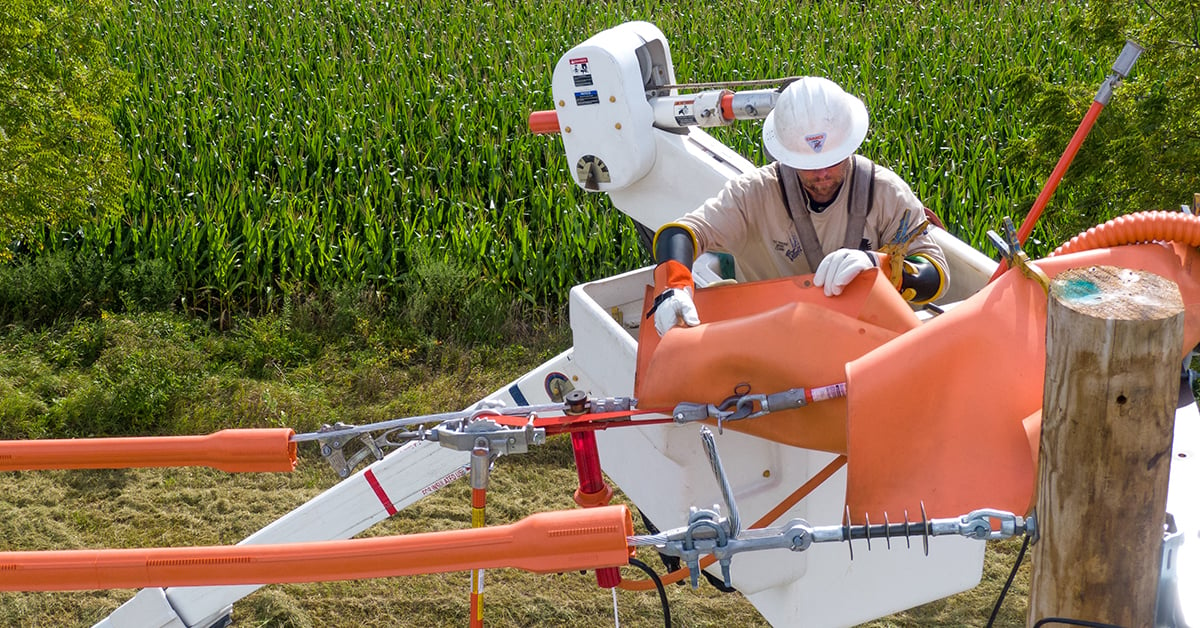Temporary protective cover-up is a common piece of personal protective equipment used by linemen during energized line maintenance. It can be used with both rubber glove and hotstick work practices and is intended only for incidental brush contact. The factory recommended maximum installation time for cover-up is 72 hours. Here are answers to 3 common misconceptions about rubber and hard plastic cover-up.
- Hard plastic and rubber covers are rated for the same voltage.
The belief that hard plastic and rubber cover cover-up are rated for the same voltage is incorrect.
- Rubber insulating cover-up is designed, tested and manufactured to ASTM D1048, D1049, and D1050. These standards use the same maximum use and testing voltages as rubber insulating gloves (ASTM D120).
- Hard plastic cover-up is designed, tested and manufactured to ASTM F712. ASTM F712 rates hard plastic covers as phase-to-ground or covered-phase-to-covered-phase rather than phase-to-phase for rubber covers.
The maximum use voltages for similar classes of plastic cover-up are less than or equal to those in the rubber standards. For example, a Class 2 rubber line hose has a maximum use voltage of 17kV phase-to-phase while a Class 2 plastic conductor cover has a maximum use voltage of 8.4kV phase-to-ground or a covered-phase-to-covered-phase rating of 14.6kV. Rubber line hose is also required to be tested for 3 minutes at 20kV phase-to-ground while the hard-plastic conductor cover is tested for 1 minute at 13.0kV phase-to-ground.
- Doubling up cover-up can allow a line worker to lean or rest against an energized piece of equipment.
This question is often asked, and the answer is always no. The only primary forms of protection allowed by OSHA are insulated hotsticks designed, manufactured and tested to the ASTM F711 standard and rubber insulating gloves designed, manufactured and tested to the ASTM D120 standard. Both standards have maximum leakage current requirements, while none of the cover-up standards have them. Cover-up is only intended for incidental brush contact and linemen should not intentionally rest any part of their body against it.
There are times when doubling up cover-up is a good work practice. Examples include putting an energized jumper inside of an insulated line hose and placing the line hose on a blanket or crossarm guard installed on the crossarm, or using pole covers on the pole and line hose on the energized phases when setting a new pole in an energized circuit.
- Standing on rubber insulating blankets is an acceptable work practice to protect against step and touch potential.
Rubber insulating blankets should never be stood on during energized line maintenance. As discussed before, rubber insulating blankets are designed as a secondary form of protection and should only be used for incidental brush contact. Rubber blankets are very slick when wet. This may lead to a slip, trip or fall that can cause injury. The ground can also hide dangers such as sharp rocks and other foreign material that can puncture the blanket and cause it to become dirty. A better alternate to standing on a rubber blanket is to use a CHANCE® EQUI-MAT®. These can be bonded to the equipment being worked on to create an equipotential zone, to lower the risk of step and touch potential for the line worker. They are also offered in a slip resistant version. Some examples of applications where EQUI-MATs could be used during line work include operating a truck boom from the ground, operating a switch handle, or splicing OPGW in a splicing trailer.
While there can be some misunderstanding surrounding the proper use of temporary protective cover-up, this blog has hopefully clarified some of the common misconceptions to help keep line workers safe on the job. Always make sure to follow your company’s work practices and procedures. For additional questions or to schedule training with a CHANCE® expert on temporary cover-up, or a variety of other subjects, please reach out to your local Hubbell Utility Solutions’ Territory Manager or contact our training team by filling out this form.



